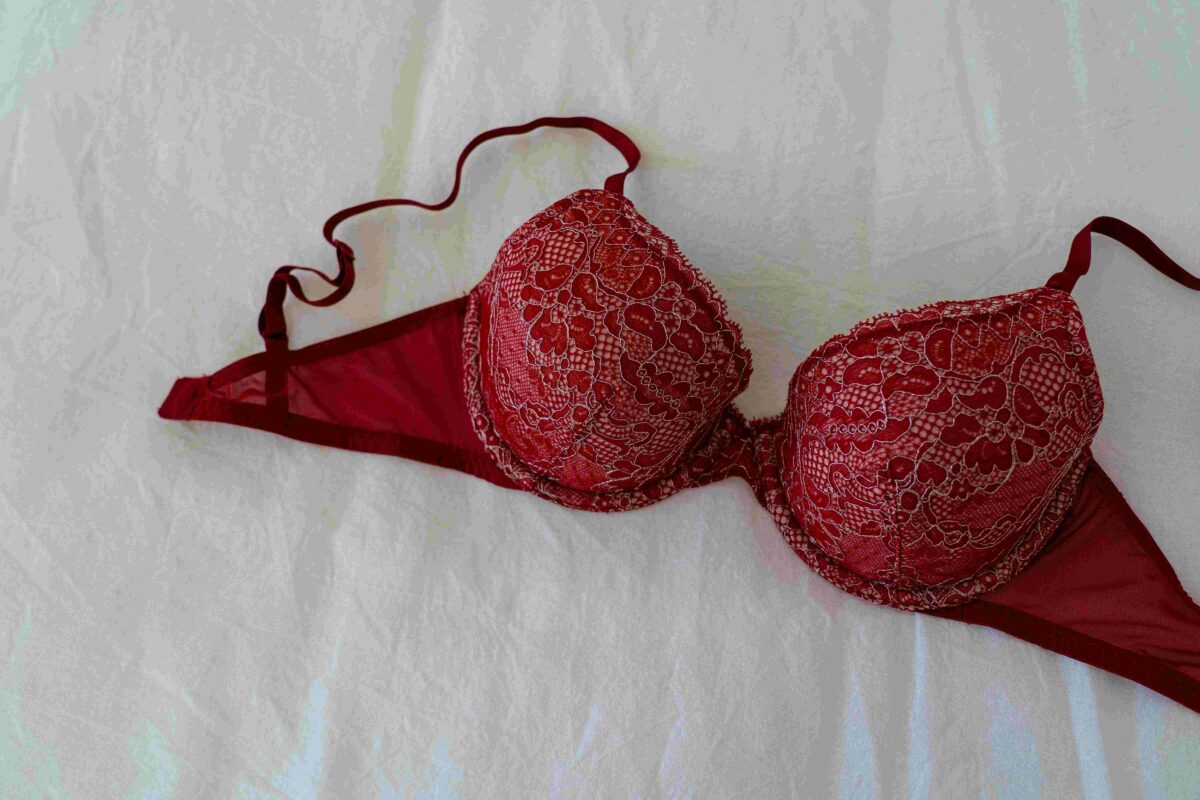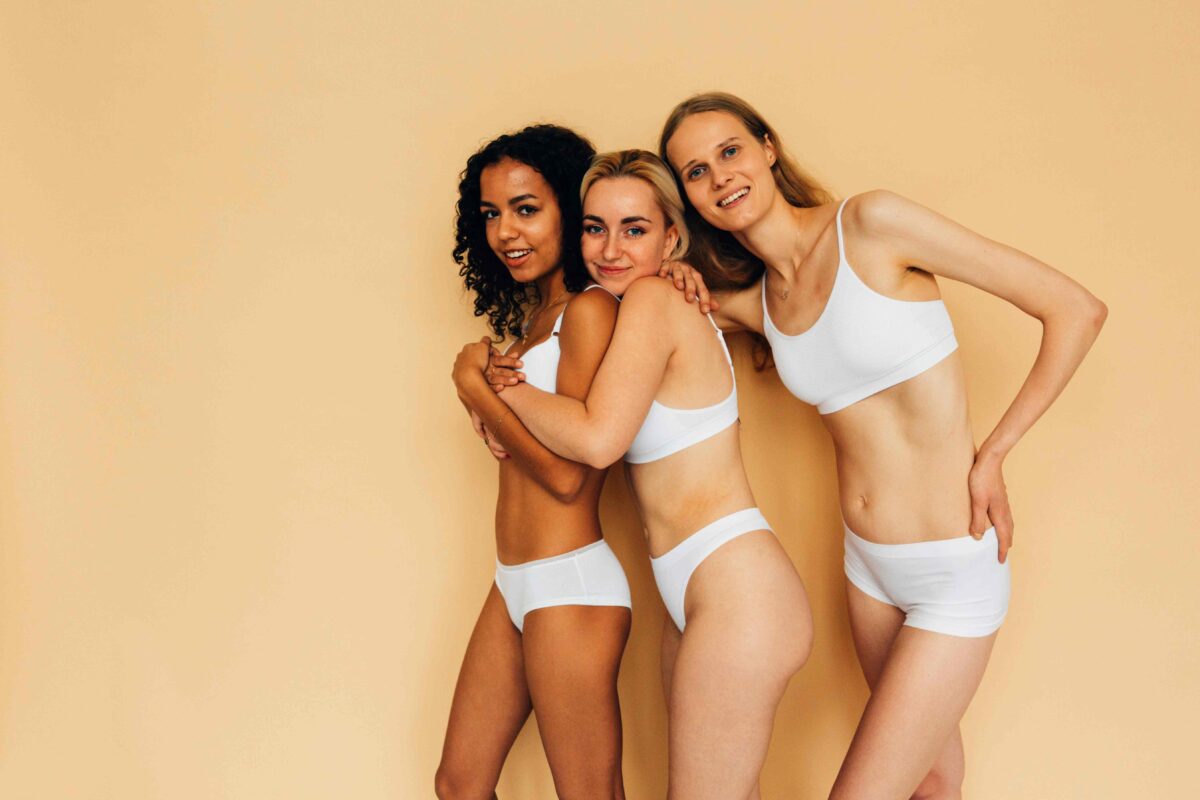Οι επιχειρήσεις ένδυσης δεν αντιμετωπίζουν πλέον τα ανδρικά εσώρουχα ως δευτερεύοντα. Τα ανδρικά εσώρουχα κατά παραγγελία έχουν γίνει μια κερδοφόρα αγορά για τους χονδρέμπορους και μεταπωλητές ενδυμάτων B2B, καθώς οι προτιμήσεις των καταναλωτών κινούνται προς την άνεση, την εξατομίκευση και τον εξαιρετικό σχεδιασμό. Είτε ο τομέας της εξειδίκευσής σας είναι η ιδιωτική ετικέτα είτε θέλετε να αυξήσετε το χονδρικό σας απόθεμα, η γνώση των αποχρώσεων αυτού του κλάδου θα σας δώσει τη δυνατότητα να προσελκύσετε νέες επιχειρήσεις, να οικοδομήσετε αφοσίωση και να προωθήσετε παραγγελίες επιστροφής.
Γιατί να επικεντρωθείτε σε εσώρουχα κατά παραγγελία; Οι άνδρες από όλα τα κοινωνικά στρώματα και τις ηλικίες, για παράδειγμα, αναζητούν μια σειρά επιλογών - από καθημερινό ρουχισμό μέχρι υλικά επιδόσεων που υποστηρίζουν τις αθλητικές προσπάθειες. Οι προσφορές κατά παραγγελία έχουν μεγαλύτερη απήχηση από τις μαζικά παραγόμενες, έτοιμες από το ράφι επιλογές, καθώς οι καταναλωτές που έχουν συνείδηση της μάρκας εκτιμούν τα διακριτικά σχέδια και τις προσαρμοσμένες ζώνες μέσης. Είτε πρόκειται για εφαρμογή, είτε για στυλ, είτε για επωνυμία, η προσαρμογή των σχεδίων σε συγκεκριμένες ανάγκες των καταναλωτών θα σας βοηθήσει να διαφοροποιήσετε την εταιρεία σας, να δημιουργήσετε ανταγωνιστικές τιμές και να παρέχετε μεγαλύτερη εμφανή αξία.

Από τον εντοπισμό των βασικών δυνατοτήτων της αγοράς έως την εύρεση των λεπτομερειών μεγέθους και των πιο σχετικών στυλ σχεδιασμού, αυτός ο λεπτομερής οδηγός θα καλύψει τις κύριες πτυχές των ανδρικών εσωρούχων κατά παραγγελία. Θα διερευνήσουμε τις αποφάσεις για τα υλικά, τις τεχνικές επωνυμίας, τις δομές κόστους, την κατασκευή και τη διανομή, τα λειτουργικά logistics. Μέχρι το τέλος, θα καταλάβετε γιατί τώρα είναι η ιδανική στιγμή για να χρησιμοποιήσετε αυτή την αναπτυσσόμενη κατηγορία - και πώς να το κάνετε με επιτυχία, εφαρμόζοντας βέλτιστες πρακτικές που διατηρούν την ικανοποίηση του πελάτη ή του τελικού χρήστη.
Το αυξανόμενο δυναμικό της αγοράς των προσαρμοσμένων εσωρούχων για άνδρες
Τα ανδρικά εσώρουχα θα μπορούσαν να θεωρηθούν βασική ανάγκη. Ωστόσο, η αυξανόμενη ζήτηση για premium και εξατομικευμένα προϊόντα υποδεικνύει ένα τμήμα με μεγάλες δυνατότητες για τους διανομείς και τους χονδρέμπορους ενδυμάτων. Οι σημερινοί άνδρες αναζητούν άνεση, επιδόσεις και στυλ συγκεντρωμένα σε ένα πακέτο, όχι μόνο για απλά, γενικά εσώρουχα.
Εξελισσόμενες προτιμήσεις των καταναλωτών
Τα ανδρικά εσώρουχα ιστορικά υπήρχαν σε λίγα μόνο χρώματα και σχέδια. Οι άνδρες τείνουν τώρα προς τις δημιουργικές ιδέες, καθώς το ισχυρό ηλεκτρονικό εμπόριο και οι μεταβαλλόμενες τάσεις της μόδας διαμορφώνουν την κοινωνία μας. Εκτιμούν χαρακτηριστικά όπως η αντοχή στην οσμή, η υγρασία που απορροφάται ή τα κομμένα στα μέτρα τους που ταιριάζουν στην ενεργή ζωή. Ταυτόχρονα, οι καταναλωτές που εκτιμούν τη βιωσιμότητα κλίνουν προς υλικά φιλικά προς το περιβάλλον, όπως μίγματα μπαμπού ή βιολογικό βαμβάκι. Μπορείτε να συναντήσετε αυτές τις σύγχρονες προτιμήσεις κατά μέτωπο, παρέχοντας εξατομικευμένες εναλλακτικές λύσεις που συνδυάζουν υπεύθυνη προμήθεια, σχεδιασμό και λειτουργία.
Υψηλά ποσοστά επαναλαμβανόμενων αγορών
Συνήθως τα περιστρεφόμενα εσώρουχα οδηγούν σε ταχύτερους κύκλους αντικατάστασης από ό,τι τα εξωτερικά ενδύματα. Οι τακτικές επαναπαραγγελίες είναι πιθανές από καταναλωτές που ανακαλύπτουν μια μάρκα ή ένα στυλ που ταιριάζει ακριβώς στο γούστο και το σώμα τους. Ως εκ τούτου, οι συνεργάτες B2B που διαθέτουν και βελτιώνουν συνεχώς την κατάλληλη σειρά εξατομικευμένων εσωρούχων που εμπιστεύονται οι άνδρες μπορούν να δημιουργήσουν σταθερές, τακτικές πηγές εσόδων.
Ανταγωνιστική διαφοροποίηση
Η παροχή εξατομικευμένων ανδρικών εσωρούχων ενισχύει τη μάρκα ή τον κατάλογο διανομής σας πάνω από τις συνήθεις ανάγκες. Σε περίπτωση που επιβλέπετε ένα πρόγραμμα ιδιωτικής ετικέτας, μπορείτε να συμπεριλάβετε μοναδικές ζώνες μέσης, εντυπωσιακές εκτυπώσεις και τεχνολογίες υφασμάτων αιχμής που σας διαφοροποιούν από τα βασικά σχέδια. Αυτές οι εξελίξεις μπορεί να σας βοηθήσουν να ξεχωρίσετε ως προοδευτικός προμηθευτής σε μια κορεσμένη αγορά ενδυμάτων.
Δίνοντας έμφαση σε ένα καλά μελετημένο τμήμα-στόχο -όπως οι αθλητικοί τύποι, οι περιβαλλοντικά ευαισθητοποιημένοι καταναλωτές ή όσοι αναζητούν πολυτελή άνεση- μπορείτε να χρησιμοποιήσετε το σχεδιασμό και την εφαρμογή ως κύρια στοιχεία πώλησης. Από τα καταστήματα που αναζητούν μοναδικά αντικείμενα στα αποθέματά τους, μπορείτε στη συνέχεια να απαιτήσετε καλύτερες τιμές ή μεγαλύτερες παραγγελίες όγκου.
Mastering Sizing: Οι άνδρες προτιμούν
Αν η εφαρμογή δεν είναι σωστή, ακόμη και ο πιο ευφάνταστος σχεδιασμός δεν θα είναι αποτελεσματικός. Τα ανδρικά εσώρουχα κατά παραγγελία πρέπει να έχουν το σωστό μέγεθος, αν θέλουμε να εγγυηθούμε ότι οι πελάτες σας θα βιώσουν τη βέλτιστη άνεση και απόδοση. Αν και μερικές φορές αγνοείται, αυτό το στάδιο μπορεί να κάνει όλη τη διαφορά μεταξύ μιας σειράς προϊόντων που παραμένει απούλητη στα ράφια και μιας που ευδοκιμεί.
Ανάπτυξη ενός ακριβούς διαγράμματος μεγεθών
Καθώς δημιουργείτε το διάγραμμα μεγέθους σας, συγκεντρώστε ανθρωπομετρικές πληροφορίες από αξιόπιστες πηγές και αντιστοιχίστε αυτές τις διαστάσεις με τις πραγματικές εισροές. Για παράδειγμα, το μεσαίο σας μέγεθος μπορεί να ταιριάζει σε διαστάσεις μέσης 32-34 ίντσες, ενώ το μεγάλο σας μέγεθος μπορεί να εκτείνεται σε 36-38 ίντσες. Τα ανδρικά εσώρουχα συνήθως κυμαίνονται στο μέγεθος της μέσης, αλλά λάβετε επίσης υπόψη την περιφέρεια και το μήκος των μηρών, ειδικά για τα κορμάκια ή τα σλιπ μπόξερ. Δώστε στον συνεργάτη σας κατασκευής ακριβείς οδηγίες για να εγγυηθείτε τη συνέπεια σε όλες τις παρτίδες παραγωγής.
Φιλοξενία διαφορετικών σχημάτων σώματος
Οι σωματικές μορφές των ανδρών ποικίλλουν σε μεγάλο βαθμό. Ενώ κάποιοι έχουν μεγαλύτερο στομάχι αλλά λεπτότερα πόδια, άλλοι μπορεί να έχουν μικρούς γοφούς αλλά φαρδύτερους μηρούς. Η παροχή πολλών στυλ - σλιπ, κορμάκια, σλιπ μπόξερ και μποξεράκια - επιτρέπει στους πελάτες μια σειρά από επιλογές εφαρμογής. Ορισμένες φορές μπορεί να ξεχωρίσετε την εταιρεία σας προσφέροντας σε plus-size ή ψηλούς σωματότυπους συγκεκριμένα κοψίματα ή εκτεταμένα μεγέθη. Ενισχύοντας παράλληλα τον περιεκτικό χαρακτήρα της επιχείρησής σας, μια μεγάλη ποικιλία μεγεθών σας βοηθά να προσελκύσετε μια πιο ποικιλόμορφη πελατεία.
Διεξαγωγή δοκιμών προσαρμογής
Επενδύστε σε μια πλήρη φάση δοκιμών φθοράς προτού εγκρίνετε σημαντική κατασκευή. Ζητήστε από μια ομάδα ατόμων με διαφορετικούς σωματότυπους να παρακολουθήσουν τον βαθμό άνεσής τους για μια καθορισμένη περίοδο. Ρωτήστε σχετικά με την κάλυψη, την ενόχληση από τις ραφές και τη στεγανότητα της ζώνης μέσης. Εφαρμόστε αυτές τις διαπιστώσεις για να βελτιώσετε τα πατρόν αλλάζοντας παράγοντες όπως το ύψος ανόδου ή το πλάτος του ανοίγματος του ποδιού. Μετά την κυκλοφορία του προϊόντος σας, αυτή η επαναληπτική στρατηγική μειώνει σημαντικά τις επιστροφές και τη δυσαρέσκεια.
Όταν η διαστασιολόγηση είναι μια απρόσκοπτη διαδικασία, οι τελικοί χρήστες και τα καταστήματα σας εμπιστεύονται. Με την πάροδο του χρόνου, η εμπιστοσύνη αυτή προάγει την αφοσίωση στο εμπορικό σήμα, η οποία οδηγεί σε επαναλαμβανόμενες επιχειρήσεις και συστάσεις από στόμα σε στόμα - κρίσιμα στοιχεία για κάθε εταιρεία B2B που προσπαθεί να αναπτυχθεί.
Επιλογές στυλ σε προσαρμοσμένα εσώρουχα για άνδρες: Διαφορετικές απαιτήσεις
Το στυλ δεν έχει να κάνει μόνο με την αισθητική στον κόσμο των ανδρικών εσωρούχων που αγοράζονται χύμα. Καλύπτει επίσης την άνεση, τη χρησιμότητα και την επικοινωνία με το εμπορικό σήμα. Παρέχοντας διάφορα κοψίματα, ζώνες μέσης και στοιχεία σχεδιασμού θα προσελκύσετε μια σειρά καταναλωτών - από συμβατικούς αγοραστές έως fashion-forward millennials.
Δημοφιλείς περικοπές
- Σλιπ: Συχνά απευθύνεται σε άνδρες που προτιμούν ελάχιστο ύφασμα χωρίς να θυσιάζουν την υποστήριξη.
- Μπόξερς: Παρέχουν μέγιστη διαπνοή και χαλαρή εφαρμογή, αν και μπορεί να συσσωρευτούν.
- Μπόξερ σλιπ: Ένα υβριδικό στυλ που προσφέρει εκτεταμένη κάλυψη των ποδιών και άνετη εφαρμογή, κατάλληλο για καθημερινή χρήση ή προπόνηση.
- Μπαούλα: Κοντύτερα από τα σλιπ μπόξερ, αλλά προσφέρουν παρόμοια υποστήριξη, καθιστώντας τα μια κομψή επιλογή για αγοραστές που έχουν συνείδηση της τάσης.
Κάθε περικοπή απευθύνεται σε συγκεκριμένα τμήματα πελατών. Η αποθήκευση πολλών στυλ επιτρέπει στους συνεργάτες B2B -ιδιαίτερα αν προσαρμόζουν ορισμένες σειρές για αθλητικές επιδόσεις και άλλες για χαλαρή καθημερινή χρήση- να απευθύνονται σε μεγαλύτερο κοινό.
Προσαρμογή ζώνης μέσης
Η συνολική ελκυστικότητα ενός ενδύματος ενισχύεται πολύ από τις επώνυμες ζώνες μέσης. Σε μερικούς καταναλωτές αρέσει μια συγκρατημένη, μονόχρωμη ζώνη. Άλλοι αναζητούν ισχυρά, επαναλαμβανόμενα λογότυπα που τονίζουν την ταυτότητα της μάρκας. Αποφασίστε αν θέλετε να παρέχετε στοιχεία με μεταξοτυπία, υφαντά μοτίβα ή κεντημένο φινίρισμα. Η ζώνη μέσης μπορεί να γίνει μια μικρή διαφημιστική πινακίδα για την εταιρεία σας, αφού συνήθως παραμένει ορατή πάνω από το παντελόνι.
Τάσεις εκτύπωσης και χρωμάτων
Από τα παραδοσιακά μονόχρωμα, όπως το μαύρο, το ναυτικό και το γκρι, μέχρι τα ιδιόρρυθμα σχέδια, συμπεριλαμβανομένων των γεωμετρικών μοτίβων ή των εποχιακών θεμάτων, η ποικιλία χρωμάτων και σχεδίων είναι ζωτικής σημασίας. Η απόφασή σας μπορεί να βασίζεται στην προσωπικότητα της μάρκας: για μια premium σειρά, ουδέτερα χρώματα ή για μια αθλητική ή νεανική μάρκα, ζωηρά σχέδια. Ερευνήστε τις εποχιακές τάσεις για να διατηρείτε φρέσκες, εναλλασσόμενες αποχρώσεις που ανταποκρίνονται στη ζήτηση της αγοράς όλο το χρόνο.
Λειτουργικά πρόσθετα
Τα πρόσθετα που αφορούν τον τρόπο ζωής μπορούν να διευρύνουν την αγορά σας:
- Πάνελ που απορροφούν την υγρασία: Ιδανικό για σπορ ή έντονες καθημερινές ρουτίνες.
- Έλεγχος οσμών: Οι καινοτομίες στα αντιμικροβιακά υφάσματα απευθύνονται στους λάτρεις του γυμναστηρίου ή στους συχνούς ταξιδιώτες.
- Ραφές Flatlock: Ελαχιστοποίηση της τριβής κατά τη διάρκεια μεγάλων περιόδων φθοράς, ζωτικής σημασίας για τους δρομείς ή τους ποδηλάτες.
Διαφοροποιείστε από τις γενικές σειρές εσωρούχων αναμειγνύοντας σκόπιμη καινοτομία με κλασικά σχέδια. Οι έμποροι λιανικής οδηγούνται να προσφέρουν τα προϊόντα σας με τον κατάλληλο συνδυασμό στυλ και χρησιμότητας, καθώς βλέπουν δυνατότητες τόσο για πιστότητα στη μάρκα όσο και για παρορμητικές αγορές.

Επιλογή υφασμάτων για προσαρμοσμένα εσώρουχα που οι άνδρες θα εκτιμήσουν
Η επιλογή του υφάσματος παραμένει ένας κρίσιμος παράγοντας διαφοροποίησης στα ανδρικά εσώρουχα κατά παραγγελία. Ελέγχει την άνεση καθώς και την ανθεκτικότητα, την αναπνευσιμότητα και τη γενική απόδοση του ενδύματος. Η γνώση των πλεονεκτημάτων και των μειονεκτημάτων των διαφόρων υφασμάτων βοηθά τους διανομείς να δημιουργήσουν ένα προϊόν που ανταποκρίνεται ακριβώς στις ανάγκες των καταναλωτών.
Μείγματα βαμβακιού
Το βαμβάκι είναι πάντα αγαπημένο λόγω της απαλότητας και της αναπνοής του. Αλλά το βαμβάκι 100% δεν θα μπορούσε να έχει ιδιότητες γρήγορου στεγνώματος ή τεντώματος, επομένως η προσθήκη spandex ή πολυεστέρα θα βελτίωνε την ελαστικότητα και τον έλεγχο της υγρασίας. Συνήθως διατηρώντας το σχήμα περισσότερο, τέτοιοι συνδυασμοί βοηθούν στην ελαχιστοποίηση της χαλάρωσης όλη την ημέρα.
Μπαμπού ή modal
Όσοι αναζητούν μια βελούδινη, πλούσια αίσθηση θα μπορούσαν να επιλέξουν υφάσματα από μοντάλ ή μπαμπού. Και τα δύο έχουν εξαιρετική υφή, απαλότητα και περιβαλλοντικές ιδιότητες. Το μπαμπού είναι μια καλή εναλλακτική λύση για τον έλεγχο των οσμών, καθώς έχει ιδιαίτερα αντιμικροβιακές ιδιότητες. Παρόλο που αυτά τα υφάσματα μπορεί να είναι πιο δαπανηρά, η υψηλότερη τιμή έχει συνήθως νόημα δεδομένης της άνεσης και της μοναδικότητας της μάρκας.
Συνθετικά επιδόσεων
Οι συνθετικές ύλες επιδόσεων, όπως το νάιλον ή ο πολυεστέρας, είναι οι καλύτερες εναλλακτικές λύσεις για τα παιδιά που ζουν μια δραστήρια ζωή ή χρειάζονται ειδικά ρούχα για αθλήματα. Απορροφούν την υγρασία, στεγνώνουν γρήγορα και συχνά χρησιμοποιούν spandex για μέγιστο εύρος κίνησης. Μερικές φορές τα συνθετικά υλικά μυρίζουν, αν δεν έχουν υποστεί αντιβακτηριακή επεξεργασία. Βεβαιωθείτε ότι ο κατασκευαστής σας διαθέτει διαδικασίες για τη μείωση της κατακράτησης οσμών, συνήθως χρησιμοποιώντας βελτιωμένες τεχνικές ύφανσης ή επιπλέον φινιρίσματα, διατηρώντας έτσι την ποιότητα της μάρκας.
Επιλογές φιλικές προς το περιβάλλον
Η συνειδητή κατανάλωση αυξάνεται καθώς όλο και περισσότεροι άνθρωποι αναζητούν αγαθά φιλικά προς το περιβάλλον. Η επιχείρησή σας μπορεί να χρησιμοποιήσει βιώσιμο βαμβάκι -βιολογικό ή δίκαιου εμπορίου- ανακυκλωμένο πολυεστέρα ή συνδυασμούς φιλικούς προς το περιβάλλον. Το μάρκετινγκ σας μπορεί να προσελκύσει καταστήματα και τελικούς χρήστες που δίνουν προτεραιότητα στην ηθική προμήθεια, τονίζοντας αυτές τις βιώσιμες επιλογές.
Τελικά, κάθε ύφασμα προσφέρει μοναδικά οφέλη για να ταιριάζει στις διάφορες προτιμήσεις των καταναλωτών. Η προσφορά διαφόρων τύπων υφασμάτων μπορεί να σας βοηθήσει να εξυπηρετήσετε ένα ευρύτερο φάσμα πελατών, από εκείνους που αναζητούν είδη καθημερινής ανάγκης έως εκείνους που αναζητούν εσώρουχα με προσανατολισμό στις επιδόσεις.
Εξορθολογισμός της παραγωγής και της εφοδιαστικής αλυσίδας προσαρμοσμένων εσωρούχων ανδρών ζήτησης
Η επιτυχής κυκλοφορία μιας σειράς ανδρικών εσωρούχων δεν τελειώνει με το σχεδιασμό και την επιλογή υφάσματος. Στο παρασκήνιο, η αξιόπιστη εφοδιαστική και η αποτελεσματικότητα της κατασκευής μπορούν να εγγυηθούν την άμεση παράδοση και τη διατήρηση της ποιότητας - ένα σημαντικό πλεονέκτημα πώλησης στις επαφές B2B.
Επιλογή του σωστού συνεργάτη παραγωγής
Αναζητήστε έναν κατασκευαστή με ιστορικό στην παραγωγή εσωρούχων, όχι μόνο για γενική χρήση. Οι εξειδικευμένοι κατασκευαστές γνωρίζουν την τοποθέτηση ραφών, την ευελιξία της ζώνης μέσης και πόσο δύσκολο μπορεί να είναι να ασχοληθεί κανείς με εύκαμπτα υλικά. Για να είστε σίγουροι ότι ανταποκρίνονται στους στόχους παραγωγής σας, ζητήστε να δείτε τις διαδικασίες διασφάλισης ποιότητας, ζητήστε συστάσεις από προηγούμενους πελάτες και εξετάστε τις ελάχιστες ποσότητες παραγγελίας (MOQ). Καθώς η εταιρεία σας επεκτείνεται, ένας συνεπής συνεργάτης μπορεί να κλιμακωθεί μαζί με το εμπορικό σας σήμα για να διαχειρίζεται μεγαλύτερες παραγγελίες.
Δειγματοληψία και έλεγχοι ποιότητας
Μόλις επισημοποιήσετε τα κριτήρια σχεδιασμού, ζητήστε μια πρώτη δειγματική παρτίδα. Η προσεκτική εξέτασή τους ως προς την ακρίβεια των χρωμάτων, την ομοιομορφία της βελονιάς και τα στοιχεία επωνυμίας, όπως οι υφαντές ετικέτες ή τα ένθετα συσκευασίας, μπορεί να βοηθήσει στη διόρθωση τυχόν λαθών γραφής, ώστε και οι δύο πλευρές να παραμείνουν σαφείς ως προς τις αλλαγές. Για να σταματήσετε τα γενικά λάθη, σκεφτείτε να ελέγξετε δειγματοληπτικά τυχαίες μονάδες σε διάφορες φάσεις κατά τη μετάβαση στη μαζική παραγωγή.
Διαχείριση αποθηκών και αποθεμάτων
Δημιουργήστε σχέδια κέντρου διανομής ή αποθήκης που εγγυώνται την ικανότητά σας να φτάνετε γρήγορα στα καταστήματα. Εάν δραστηριοποιείστε στο εξωτερικό, αναμείνατε τελωνειακούς κανόνες, περιόδους αποστολής, ακόμη και διακυμάνσεις του νομίσματος που επηρεάζουν τα περιθώρια κέρδους σας. Ορισμένοι διανομείς B2B εξετάζουν επίσης εταιρείες εξωτερικής εφοδιαστικής (3PL) που επικεντρώνονται στην αποστολή και αποθήκευση ενδυμάτων. Αυτή η στρατηγική μειώνει τα γενικά έξοδα, εξοικονομεί χρόνο και σας επιτρέπει να επικεντρωθείτε στην αύξηση της αναγνωρισιμότητας της μάρκας.
Έγκαιρη εκπλήρωση και κύκλοι αναπαραγγελίας
Τα ανδρικά εσώρουχα πωλούνται συχνά σταθερά καθ' όλη τη διάρκεια του έτους, με πιθανές αιχμές γύρω από τις γιορτές ή τις εποχιακές αλλαγές. Η ανάλυση δεδομένων του παρελθόντος (για γνωστές εταιρείες) ή η έρευνα αγοράς (εάν είστε νέοι στην περιοχή) θα σας βοηθήσει να είστε μπροστά από τη ζήτηση. Ένα καλά οργανωμένο πρόγραμμα αναπλήρωσης εγγυάται ότι οι πελάτες σας B2B δεν θα βιώσουν ποτέ έλλειψη αποθεμάτων, διατηρώντας έτσι την αξιοπιστία σας ως προς την αξιοπιστία. Η προληπτική αναπλήρωση επιτρέπει επίσης εκστρατείες μάρκετινγκ που συνδέονται με νέες κυκλοφορίες χρωμάτων ή εξελίξεις στα υφάσματα.
Μέσω των βελτιωμένων διαδικασιών παραγωγής και εφοδιαστικής, μειώνετε τις δαπανηρές καθυστερήσεις και επιστροφές - και τα δύο από τα οποία μπορούν να χαλάσουν τους δεσμούς με τους μεταπωλητές. Η σταθερή ποιότητα και η αποτελεσματικότητα γίνονται προτάσεις πώλησης που προσελκύουν νέους συνεργάτες χονδρικής και κρατούν τους υπάρχοντες ευχαριστημένους.
Συμπέρασμα
Τα ανδρικά εσώρουχα κατά παραγγελία αποτελούν μια δυναμική και συνεχώς αναπτυσσόμενη κατηγορία στον κλάδο της ένδυσης. Μακριά από ένα απλό εμπόρευμα, συνδυάζει θέματα ακρίβειας μεγέθους, τεχνολογίας υφασμάτων, αισθητικής σχεδιασμού και κορυφαίας αισθητικής κατασκευής. Η παροχή καλοφτιαγμένων, μοντέρνων ανδρικών εσωρούχων μπορεί να είναι το κλειδί για τη διατήρηση του κέρδους, τη δημιουργία πιστότητας στη μάρκα και τη διαφοροποίηση των προϊόντων σας σε μια κορεσμένη αγορά για τους διανομείς και μεταπωλητές ενδυμάτων B2B.
Παρόλα αυτά, η επιτυχία στον τομέα αυτό απαιτεί τόσο έρευνα όσο και στρατηγική σαφήνεια. Από τα πρώτα σκίτσα της ιδέας μέχρι το τελευταίο υλικοτεχνικό σας σχέδιο, κάθε ενέργεια πρέπει να συμπίπτει με την άνεση, τις απαιτήσεις του τρόπου ζωής και το γούστο για μοναδικότητα του τελικού πελάτη. Τα λάθη στο μέγεθος ή τα κατώτερα υλικά μπορούν να βλάψουν γρήγορα τη φήμη μιας εταιρείας, οπότε η ενδελεχής δειγματοληψία και ο ισχυρός ποιοτικός έλεγχος καθίστανται απολύτως αδιαπραγμάτευτα. Εν τω μεταξύ, το έξυπνο μάρκετινγκ και το brand storytelling βοηθούν τις ιδιαίτερες ιδιότητές σας -όπως οι επιδόσεις που απορροφούν την υγρασία ή μια φιλοσοφία κατασκευής φιλική προς το περιβάλλον- να τραβήξουν την προσοχή τόσο των καταστημάτων όσο και των καταναλωτών.
Να θυμάστε ότι οι σταθεροί κύκλοι αγοράς της κατηγορίας δημιουργούν επαναλαμβανόμενες ευκαιρίες πωλήσεων, ακόμη και όταν βελτιώνετε αυτές τις τεχνικές και αναπτύσσετε μια ελκυστική σειρά εξατομικευμένων ανδρικών εσωρούχων. Κάθε επανάληψη σας επιτρέπει να προσθέσετε νέες τάσεις, να δοκιμάσετε συγκεκριμένα υφάσματα ή να αλλάξετε το μέγεθος για να προσαρμόσετε τις μεταβαλλόμενες προτιμήσεις του κοινού σας. Αυτό παράγει μια επιλογή προϊόντων που αναπτύσσεται και ευδοκιμεί, ενισχύοντας έτσι τη θέση σας στη σκηνή των μαχαιρωμένων ενδυμάτων. Τα ανδρικά εσώρουχα κατά παραγγελία είναι μια δυνατότητα που αξίζει να σκεφτείτε προσεκτικά αν θέλετε να επεκτείνετε το χαρτοφυλάκιό σας B2B με ένα προϊόν με ζήτηση που αυξάνει τη διατήρηση των πελατών.
Συχνές ερωτήσεις
Ποιους βασικούς παράγοντες πρέπει να λάβω υπόψη μου όταν επιλέγω έναν κατασκευαστή για ανδρικά εσώρουχα κατά παραγγελία;
Δώστε έμφαση στις εξειδικευμένες γνώσεις στα εσώρουχα, στον συνεπή ποιοτικό έλεγχο και στη διαχείριση του όγκου που χρειάζεστε. Πάρτε συστάσεις και δείτε δείγματα για τη γενική άνεση, την ελαστικότητα της ζώνης μέσης και την ποιότητα της ραφής. Η συνεργασία με μια εγκατάσταση με εμπειρία στην κατασκευή ανδρικών εσωρούχων μειώνει την πιθανότητα λαθών στη διαστασιολόγηση ή την κατασκευή.
Πώς μπορώ να αποφασίσω ποια στυλ θα προσφέρω στη σειρά ανδρικών εσωρούχων μου;
Ερευνήστε τις προτιμήσεις και τον τρόπο ζωής της αγοράς-στόχου σας. Ενώ τα σλιπ μπόξερ και τα κορμάκια είναι ιδανικά για καθημερινή χρήση και σωματική δραστηριότητα, τα μποξεράκια ταιριάζουν σε άτομα που αναζητούν αναπνοή. Προσφέροντας διάφορα κοψίματα -σλιπ, κορμάκια και σλιπ μπόξερ- αυξάνετε την πιθανή αγορά σας. Δείτε τις ανταγωνιστικές σειρές και λάβετε τα σχόλια των ομάδων δοκιμών για να επικυρώσετε τις προσδοκίες του στυλ.
Μπορώ να ενσωματώσω τη βιωσιμότητα στη σειρά εσωρούχων μου χωρίς να αυξήσω σημαντικά το κόστος;
Παρόλο που οι βιώσιμες επιλογές, όπως το βιολογικό βαμβάκι ή τα μείγματα μπαμπού, μπορεί να είναι αρχικά κάπως ακριβότερες, οι καταναλωτές γενικά πληρώνουν μια πριμοδότηση για περιβαλλοντικά υπεύθυνη ένδυση. Ενώ εξακολουθείτε να υπογραμμίζετε τα οικολογικά ιδεώδη της επιχείρησής σας, μπορείτε να εξισορροπήσετε το κόστος και την κοινωνική ευθύνη, διαπραγματευόμενοι μαζικές εκπτώσεις με τους προμηθευτές ή περιορίζοντας τα περιορισμένα ειδικά υλικά σε μια συλλογή με υπογραφή.
Ποια είναι τα αποτελεσματικά κανάλια μάρκετινγκ για τις πωλήσεις Β2Β ανδρικών εσωρούχων κατά παραγγελία;
Η σύνδεση με διανομείς και μεταπωλητές εξαρτάται σε μεγάλο βαθμό από έναν καλό ιστότοπο, τη δικτύωση στο LinkedIn, το μάρκετινγκ ηλεκτρονικού ταχυδρομείου και τις εμπορικές εκθέσεις του κλάδου. Δίνοντας έμφαση στην άνεση, το στυλ ή τη βιωσιμότητα, η μάρκα σας θα πρέπει να τοποθετείται με σαφή γλώσσα και να χρησιμοποιεί εντυπωσιακές εικόνες προϊόντων για να προσελκύει την προσοχή των αγοραστών. Για να ενισχύσετε την αξιοπιστία της σειράς σας, παρουσιάστε μελέτες περιπτώσεων ή αποσπάσματα από ευχαριστημένους συνεργάτες λιανικής πώλησης.
Πώς χειρίζομαι τις διαφορές μεγέθους εάν οι πελάτες βρίσκουν τα εσώρουχα πολύ στενά ή χαλαρά;
Ξεκινήστε με έναν καλά μελετημένο πίνακα μεγεθών και κάντε δοκιμές εφαρμογής χρησιμοποιώντας πάντα ομάδες δειγμάτων. Σε περίπτωση που προκύψουν προβλήματα μετά το λανσάρισμα, αλλάξτε τις προδιαγραφές των μεγεθών σας και τροποποιήστε τις λίστες ή τη συσκευασία των προϊόντων σας. Διατηρήστε ανοιχτές γραμμές επικοινωνίας με τους πελάτες, ιδίως με τους διανομείς ή τα καταστήματα, ώστε να είναι δυνατή η ταχεία προσαρμογή των μοντέλων στις επόμενες σειρές παραγωγής.
Είστε έτοιμοι να αναβαθμίσετε τις προσφορές σας σε είδη ένδυσης B2B με ανδρικά εσώρουχα κατά παραγγελία; Modenly ειδικεύεται στην προμήθεια υφασμάτων υψηλής ποιότητας, στη βελτίωση της εφαρμογής και στον εξορθολογισμό της παραγωγής. Επικοινωνήστε μαζί μας για να μάθετε πώς μπορούμε να σας βοηθήσουμε να δημιουργήσετε μια ξεχωριστή σειρά ανδρικών εσωρούχων - από τον αρχικό σχεδιασμό μέχρι την τελική παράδοση.

